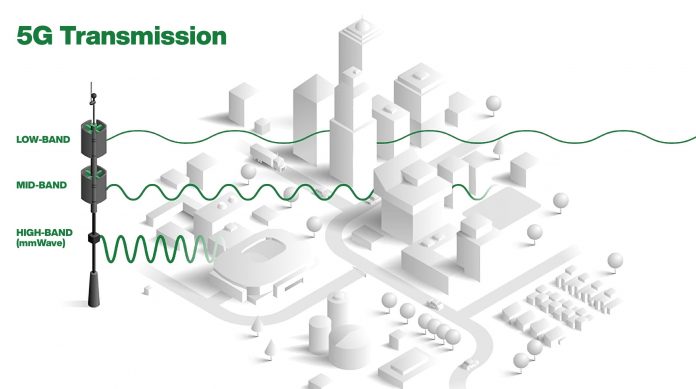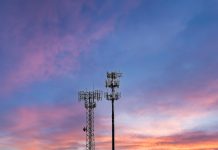Low-band 5G broadband has the potential as the next step to deliver better rural connectivity, David Hennell from National Broadband explains
For the 420,000+ primarily rural homes and businesses which according to Ofcom’s latest research still suffer with painfully slow (sub 10 Mbps) landline broadband speeds, a significantly quicker internet connection delivered over 4G is already proven to be the ideal solution, as a number of more forward-thinking regional broadband authorities are realising.
Almost any UK property can be provisioned with 4G broadband very cost-effectively in a matter of days and will then instantly benefit from genuinely life-changing faster connectivity.
But what’s the next step for such premises? Is the rise of 5G technology set to provide the next improvement in broadband speeds for those living or working more rurally?
Understanding the three types of 5G
For metropolitan areas, the emergence of 5G technology is already a game- changer, delivering faster speeds, lower latency, and a multitude of possibilities for a better-connected future. However, what is little understood is that 5G technology actually encompasses three different levels of service.
The version of 5G that is currently being deployed in major towns and cities is known as ‘mid-band’. It is transmitted at frequency levels between 2.6 and 4GHz, delivering ultrafast performance levels typically ranging from 100 to 500 Mbps.
Because major population centres typically have a wide choice of available broadband services – including full fibre connections – in the vast majority of cases, 5G is used to provide temporary connectivity to mobile devices such as smartphones, laptops and tablets while those are within coverage of 5G services.
However, the UK’s four mobile networks will shortly start rolling out ‘low-band’ 5G to cover areas of lower population density. Low-band 5G is transmitted at much lower frequencies around the 700MHz range. This means that it will be easily leverageable to provide the next step in improved connectivity for the hundreds of thousands let down by traditional landline-based broadband services.
A third type of 5G, known as ‘high-band’ or millimetre wave, will offer gigabit- capable (1,000 Mbps) connectivity, but this won’t even start being deployed for several years.

Why and how low-band 5G differs from today’s urban 5G services
While much attention is currently being given to 5G’s higher-frequency bands with their impressive data rates, low-band 5G is set to play a crucial role in expanding coverage and bridging connectivity gaps in non-metropolitan areas – and this is all down to the frequencies at which low-band 5G will be transmitted.
The general principle is that the higher the frequency, the greater the data transfer rate, so naturally enough, higher frequencies offer faster performance. However, the major downsides of higher frequency transmissions such
as today’s mid-band 5G services are twofold: the restriction of their effective range and the limitation of their ability to penetrate through walls, windows and other obstacles.
This is why the UK’s mobile network operators transmit mid-band 5G (the fastest type of 5G currently available) in major towns and cities. Although many more masts are needed to provide coverage, the catchment volume of areas with high population density and the numerous suitable locations for deploying 5G masts make this commercially viable.
The situation is entirely reversed when it comes to low-band 5G. While it may not achieve the same blistering speeds as its higher-frequency counterparts, its lower transmission frequency means it excels in both coverage and penetration. As its range is so much greater, far fewer masts are required to deliver coverage.
Moreover, a low-band 5G signal is much less subject to interference and can travel considerably further. It is also much more capable of navigating through walls, windows, trees and other obstacles and so can happily provide robust and stable indoor connectivity.
Why low-band 5G is so well-placed to further improve rural connectivity
Whereas 4G-delivered broadband is already being widely used to provide significantly improved internet connections to more rural and remote UK properties, it’s the range and penetration of low-band 5G that puts it in pole position to deliver on the next generation of connectivity for those outside the scope of full-fibre broadband.
And just like 4G broadband today, the effective range of low-band 5G can be further extended via the installation of a high gain outdoor 5G antenna on any property wishing to benefit from a 5G broadband service. As a result, low- band 5G will help extend the reach of 5G networks to places currently underserved or lacking fit-for-purpose connectivity altogether.
The next step to close the urban-rural Digital Divide
The so-called ‘Digital Divide’ between urban and rural areas remains a persistent challenge in the quest for high-quality universal connectivity. 4G-delivered broadband services are already being used to provide vital connectivity lifelines for some of the hundreds of thousands of broadband- starved UK homes and businesses.
Nevertheless, low-band 5G is an extremely promising solution to bridge this gap further, set to bring higher-speed internet access to remote locations where traditional broadband infrastructure is challenging to implement. As 5G networks continue to expand, low-band technology looks to be the next evolution in ensuring that rural communities are not left behind and trapped in digital disadvantage.
5G broadband conclusion
Low-band 5G broadband is positioned as a critical component of the evolving telecommunications landscape, set to play a pivotal role in expanding coverage and closing connectivity gaps, together with facilitating the growth of the Internet of Things. While it may not grab headlines with astronomical data rates, the importance of its expected contribution towards creating a more inclusive and fully connected nation cannot be overstated.
Although the performance of low-band 5G will never match its mid- and eventually high-band counterparts, it is still significantly faster than traditional 4G LTE, offering a noticeable improvement in data rates and network responsiveness. As technology continues to advance and networks evolve, improvements in low-band 5G performance may occur. Still, the core focus needs to remain on enhancing the nation’s overall 5G coverage and ending digital deprivation once and for all.
Contributor Details
More About Stakeholder
-
National Broadband: Providing UK rural homes and businesses with fast and stable broadband
At National Broadband, we believe that every UK home and business should have access to good broadband and that nobody should be left trapped in digital deprivation.















